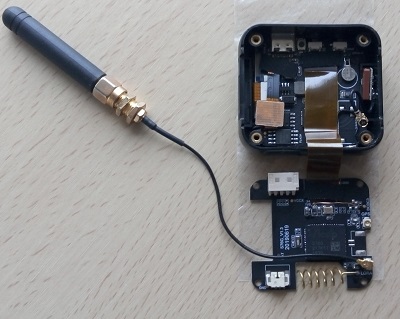I’m having problems with my recendly purcharsed board - its exact name is:
SX1276 V2 Lora ESP32 LX6 Dual-Core 0,96" OLED Bluetooth LE Wifi Kit 32 Modul CP2012 IOT 868-915MHz
EDIT: from Heltec
I’ve tried ttn-abp.ino for activating with differend pin settings and i’m never receiving anything in the Data Console … 
I’ve set up anything properly in my Account with ABP as activation method.
I think for V2 this should be correct:
const lmic_pinmap lmic_pins = {
.nss = 18,
.rxtx = LMIC_UNUSED_PIN,
.rst = 14,
.dio = {/dio0/ 26, /dio1/ 35, /dio2/ 34 }
};
Could it be that I’m already having V2.1 and it requires different settings? (It has only printed “V2” on it)
In my Serial Monitor I’m having something like this:
14:14:02.410 -> Starting
14:14:02.410 -> RXMODE_RSSI
14:14:02.410 -> 9585: engineUpdate, opmode=0x808
14:14:02.410 -> 9618: EV_TXSTART
14:14:02.444 -> 9686: TXMODE, freq=903900000, len=26, SF=7, BW=125, CR=4/5, IH=0
14:14:02.444 -> Packet queued
14:14:03.458 -> 75200: setupRx1 txrxFlags 00 --> 01
14:14:03.492 -> start single rx: now-rxtime: 4
14:14:03.492 -> 75331: RXMODE_SINGLE, freq=923300000, SF=7, BW=500, CR=4/5, IH=0
14:14:03.492 -> rxtimeout: entry: 76664 rxtime: 75325 entry-rxtime: 1339 now-entry: 4 rxtime-txend: 61775
14:14:04.492 -> 138172: setupRx2 txrxFlags 0x1 --> 02
14:14:04.492 -> start single rx: now-rxtime: 4
14:14:04.492 -> 138303: RXMODE_SINGLE, freq=923300000, SF=9, BW=125, CR=4/5, IH=0
14:14:04.526 -> rxtimeout: entry: 140624 rxtime: 138297 entry-rxtime: 2327 now-entry: 4 rxtime-txend: 124747
14:14:04.526 -> 140640: processRx2DnData txrxFlags 0x2 --> 00
14:14:04.526 -> 140700: processDnData_norx txrxFlags 00 --> 20
14:14:04.526 -> 140960: EV_TXCOMPLETE (includes waiting for RX windows)
14:14:04.526 -> 141269: engineUpdate, opmode=0x900
Any ideas what’s wrong?
Thanks


